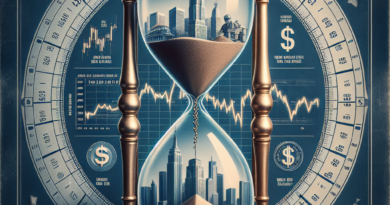Recession Fear Returns in the US: Here’s Why
US Economic Concerns Sparked by New Data
In the United States, new data has fueled fears of a possible recession and concerns that the Federal Reserve may be too late in cutting interest rates.
Initial claims for unemployment benefits have surged to their highest level since August 2023.
The ISM manufacturing index, a gauge of US factory activity, has dropped to 46.8%, worse than expected, indicating an economic contraction.
Global Market Response
These numbers have been enough to spook the markets and trigger losses.
Asian stocks closed in the red towards their worst day in over two years and US Treasury yields decreased, while the Swiss franc and the yen rose as safe-haven assets.
Geopolitical tensions have also weighed on sentiment after the Israeli military declared that Hamas military wing chief, Mohammed Deif, was killed in an Israeli airstrike in Gaza last month.
The economic and global financial outlook has once again turned gloomy.
The US is leading this atmosphere of uncertainty with doubts about the timing of Fed moves and the risk of a recession.
Wall Street Worries
Economic concerns are resurfacing on Wall Street, with increasing fears that months of high interest rates could start to impede US growth.
Investors had been encouraged by cooling inflation and a gradual slowdown in job growth, believing this would strengthen the Fed’s motivation to start cutting interest rates.
Now, with a potential interest rate cut in September following this week’s Fed meeting, investors fear that the central bank may have kept rates at restrictive levels for too long, negatively impacting economic growth.
Market Uncertainty
Thursday witnessed a sharp sell-off in US stocks triggered by data showing weakness in the labor market and manufacturing sector.
Highly valued tech stocks tumbled, extending losses in the Nasdaq Composite to nearly 8% from a record closing high reached in July.
The widespread discomfort has been evident as the Cboe Volatility Index, known as Wall Street’s fear gauge, hovers near a three-month high, with increased demand for options to protect against a market downturn.
The upcoming employment data on Friday and month-end inflation report could further exacerbate concerns if they reveal additional signs of weakness.




